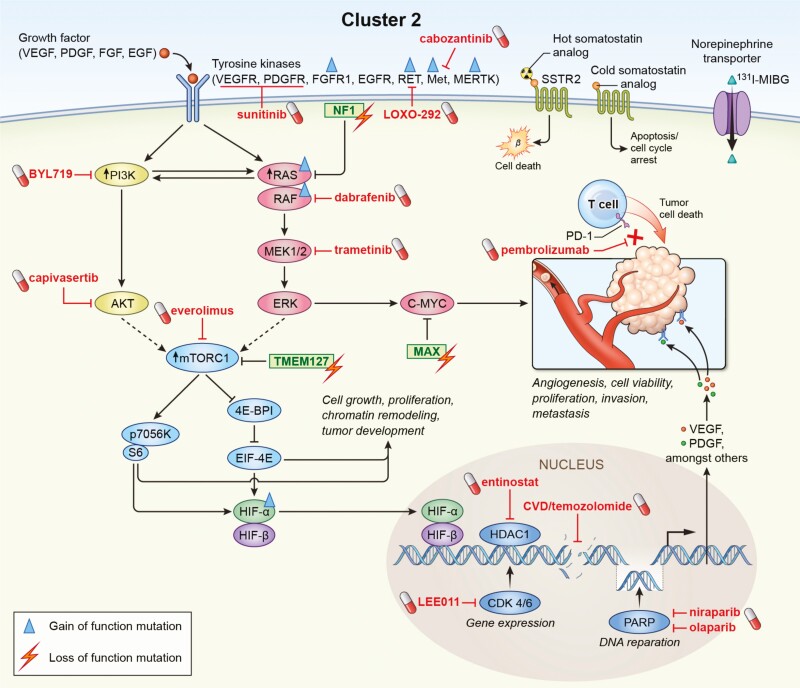Figure 5.
Gene mutations leading to an activation of kinase signaling pathways (cluster 2) and derived molecular targets for a personalized therapy. Mutations in RET, NF1, HRAS, TMEM127, MAX, FGFR1, Met, MERTK, BRAF and NGFR activate phosphatidylinositol-3-kinase (PI3K)/AKT, mammalian target of rapamycin (mTORC1)/p70S6 kinase (p70S6K), and RAS/RAF/ERK signaling pathways. Highlighted in red are potential drugs that address the molecular changes in cluster 2 PPGLs and are in preclinical and clinical evaluation. Molecular-targeted signaling pathway inhibitors (alone and in combination) might be specifically effective in these tumors. Moreover, similar to cluster 1, cluster 2 PPGLs provide the somatostatin receptor (possibly lower expression compared to cluster 1) and the norepinephrine transporter (possibly higher expression compared to cluster 1) as potential targets for the treatment of these tumors. Immune checkpoint inhibitors and drugs addressing DNA repair and synthesis mechanisms are furthermore under evaluation.

